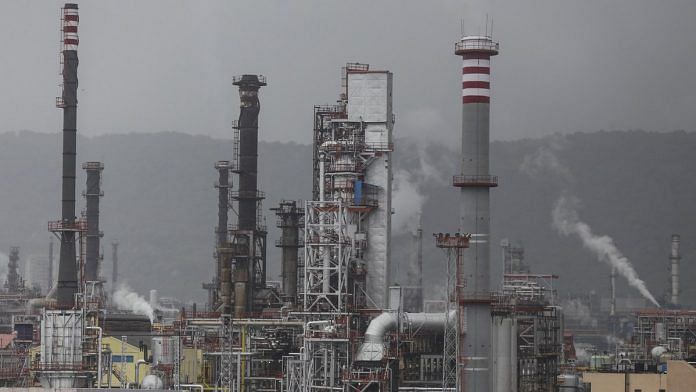New Delhi: The Modi government got lucky in 2014 when it first came to power. With global oil prices hovering around a low of $50 per barrel in 2015 — from the highs of over $100 in 2013 — the new government could afford its various welfare schemes while maintaining fiscal discipline and macroeconomic stability.
Now, five years later, as the government begins its second term, Chief Economic Adviser (CEA) K.V. Subramanian is banking on the same luck for the Modi regime to nurse the slowing economy back to health.
In the first Economic Survey tabled by new Finance Minister Nirmala Sitharaman and authored by Subramanian, the CEA Thursday said subdued global oil prices would aid India’s GDP growth pegged at 7 per cent in the current fiscal.
The survey said oil prices were expected to decline in 2019-20 from the current level of over $63 per barrel, boosting consumption.
Every $10 per barrel increase in oil prices could shave off India’s GDP growth by almost 0.2-0.3 percentage points and push current account deficit — the difference between inflow and outflow of foreign currency — by about $9, according to estimates.
India imports over 80 per cent of its oil requirements.
Also read: India can achieve Modi’s $5 trillion economy target via private investment: Economic Survey
Impact of oil prices
In 2018-19, oil prices increased by around $14 per barrel. In October, global oil prices touched $86.74 a barrel — the highest since 2014.
The high prices had prompted former CEA Arvind Subramanian, before demitting office, to cite this as a major concern for India’s growth prospects.
However, crude oil prices are expected to average $66 a barrel in 2019 and $65 in 2020, according to World Bank.
The trade war between the US and China, along with uncertainties arising from the US sanctions on Iran — one of the primary suppliers of oil — would keep crude prices under control, which would in turn boost India’s growth, said an oil analyst who didn’t wish to be named.
What the survey says
The Economic Survey 2018-19 said the crude oil prices “showed movements in both the directions within the year”, referring to the previous fiscal.
“As the year commenced, crude prices increased and reached above 80 US$/bbl. in October 2018. Thereafter, it started to decline before increasing again after December 2018. Overall the oil prices were substantially higher in 2018-19, as compared to previous year,” it said.
The survey noted that the current account deficit increased from 1.8 per cent of GDP in 2017-18 to 2.6 per cent in April-December period in 2018-19, largely due the rise in international crude oil prices.
The full-year current account deficit for 2018-19 stood at 2.1 per cent.
Higher oil prices also led to widening of trade deficit, which rose from $162.1 billion in 2017-18 to $184 billion in 2018-19.
Also read: Economic Survey fix for Modi govt’s jobs crisis — labour reforms, end perks for MSMEs



